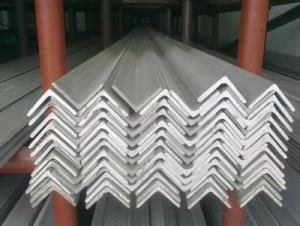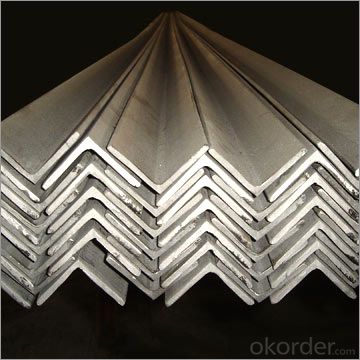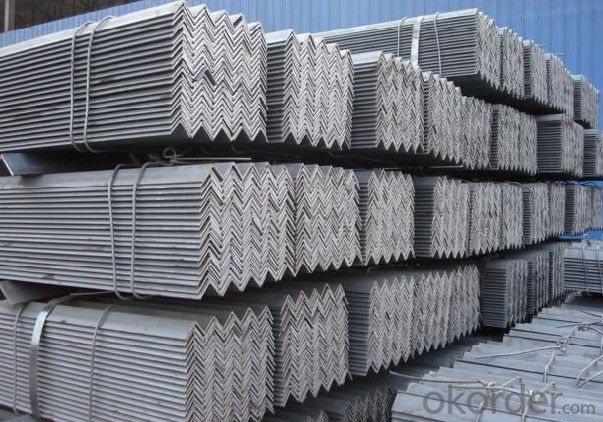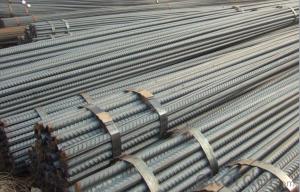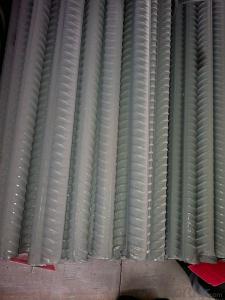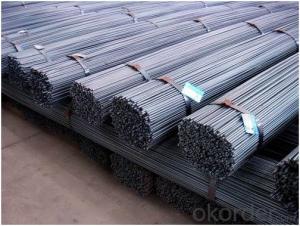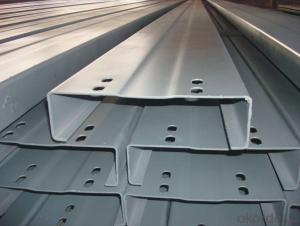Deformed Bar Hot Rolled High Quality BS 4449 GB HRB400
- Loading Port:
- Tianjin
- Payment Terms:
- TT OR LC
- Min Order Qty:
- 25 m.t.
- Supply Capability:
- 2000000 m.t./month
OKorder Service Pledge
OKorder Financial Service
You Might Also Like
Specification
Product Description:
OKorder is offering high quality Hot Rolled Steel I-Beams at great prices with worldwide shipping. Our supplier is a world-class manufacturer of steel, with our products utilized the world over. OKorder annually supplies products to European, North American and Asian markets. We provide quotations within 24 hours of receiving an inquiry and guarantee competitive prices.
Product Applications:
Deformed bar is widely used in buildings, bridges, roads and other engineering construction. Big to highways, railways, bridges, culverts, tunnels, public facilities such as flood control, dam, small to housing construction, beam, column, wall and the foundation of the plate, deformed bar is an integral structure material. With the development of world economy and the vigorous development of infrastructure construction, real estate, the demand for deformed bar will be larger and larger
Product Advantages:
OKorder's Steel I-Beams are durable, strong, and resist corrosion, exact size, regular package, chemical and mechanical properties are stable.
Main Product Features:
· Premium quality
· Prompt delivery & seaworthy packing (30 days after receiving deposit)
· Corrosion resistance
· Can be recycled and reused
· Mill test certification
· Professional Service
· Competitive pricing
Product Specifications:
Manufacture: Hot rolled
Grade: BS4449
Certificates: ISO, SGS, BV, CIQ
Diameter: 6mm,8mm,10mm,12mm,14mm,16mm,18mm,20mm,
22mm,25mm,28mm,32mm,36mm,40mm,50mm
Length: 6M, 9M,12M or as required
Packaging: Export packing, nude packing, bundled
Chemical Composition: (Please kindly find our chemistry of our material based on HRB500 as below for your information)
Grade | Technical data of the original chemical composition (%) | ||||||
C | Mn | Si | S | P | V | ||
HRB400 | ≤0.25 | ≤1.60 | ≤0.80 | ≤0.045 | ≤0.045 | 0.04-0.12 | |
Physical capability | |||||||
Yield Strength (N/cm²) | Tensile Strength (N/cm²) | Elongation (%) | |||||
≥400 | ≥570 | ≥14 | |||||
Theoretical weight and section area of each diameter as below for your information:
Diameter(mm) | Section area (mm²) | Mass(kg/m) | Weight of 12m bar(kg) |
6 | 28.27 | 0.222 | 2.664 |
8 | 50.27 | 0.395 | 4.74 |
10 | 78.54 | 0.617 | 7.404 |
12 | 113.1 | 0.888 | 10.656 |
14 | 153.9 | 1.21 | 14.52 |
16 | 201.1 | 1.58 | 18.96 |
18 | 254.5 | 2.00 | 24 |
20 | 314.2 | 2.47 | 29.64 |
22 | 380.1 | 2.98 | 35.76 |
25 | 490.9 | 3.85 | 46.2 |
28 | 615.8 | 4.83 | 57.96 |
32 | 804.2 | 6.31 | 75.72 |
36 | 1018 | 7.99 | 98.88 |
40 | 1257 | 9.87 | 118.44 |
50 | 1964 | 15.42 | 185.04 |
FAQ:
Q1: What makes stainless steel stainless?
A1: Stainless steel must contain at least 10.5 % chromium. It is this element that reacts with the oxygen in the air to form a complex chrome-oxide surface layer that is invisible but strong enough to prevent further oxygen from "staining" (rusting) the surface. Higher levels of chromium and the addition of other alloying elements such as nickel and molybdenum enhance this surface layer and improve the corrosion resistance of the stainless material.
Q2: Can stainless steel rust?
A2: Stainless does not "rust" as you think of regular steel rusting with a red oxide on the surface that flakes off. If you see red rust it is probably due to some iron particles that have contaminated the surface of the stainless steel and it is these iron particles that are rusting. Look at the source of the rusting and see if you can remove it from the surface.
Q3: Can stainless steel rust?
A3: Stainless does not "rust" as you think of regular steel rusting with a red oxide on the surface that flakes off. If you see red rust it is probably due to some iron particles that have contaminated the surface of the stainless steel and it is these iron particles that are rusting. Look at the source of the rusting and see if you can remove it from the surface.
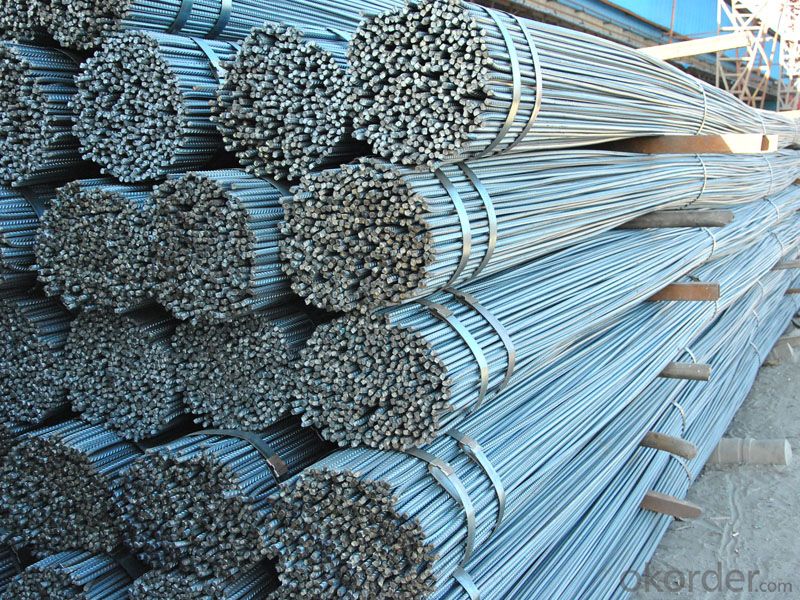

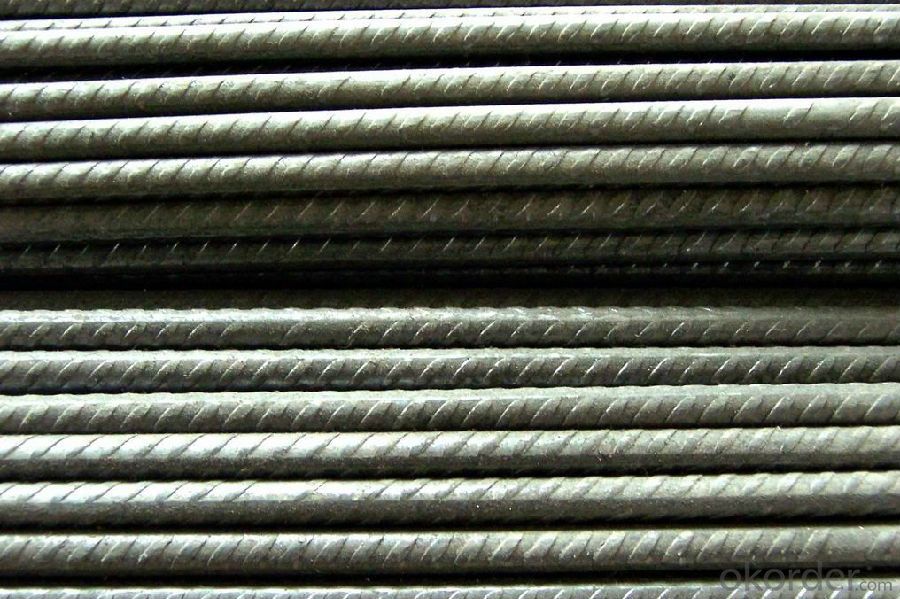
- Q: What are the guidelines for the proper lap splicing of steel rebars?
- The guidelines for the proper lap splicing of steel rebars are as follows: 1. Lap Length: The lap length refers to the minimum distance required for the overlapping of rebars. It is determined based on factors such as bar diameter, strength, and the type of structure. Generally, lap lengths are specified by engineering codes and standards. 2. Cleanliness: Before proceeding with lap splicing, it is essential to ensure that the rebars are free from any dirt, rust, oil, or other contaminants. Any foreign material on the rebar surface can hinder the bond between the overlapping bars. 3. Alignment: The rebars to be spliced must be properly aligned and parallel to each other. Any misalignment can result in a weak splice and compromise the structural integrity of the construction. 4. Overlapping: The overlapping length of rebars should be sufficient to ensure the transfer of loads and maintain the continuity of reinforcement. It is crucial to follow the specified lap length to achieve the required strength and performance of the reinforced concrete structure. 5. Splice Configuration: The type of lap splice configuration depends on the structural requirements and the specific design of the project. Commonly used splice configurations include end-to-end splicing, staggered splicing, and mechanical splices. The selection of the appropriate splice configuration should be in compliance with relevant codes and standards. 6. Splice Preparation: The rebars at the lap splice area should be properly cleaned and prepared. This involves removing any loose rust or scale from the bar surface and providing adequate bond length between the bars. 7. Lap Splice Placement: The lap splice should be positioned at the designated location within the concrete member. It is important to ensure that the splice is not too close to the edge of the concrete element, as this can reduce the cover depth and affect the durability of the structure. 8. Splice Length Variations: In cases where the required lap length is not achievable due to space limitations or other restrictions, approved alternatives such as mechanical splices or welded splices can be considered. However, it is essential to consult the project engineer or designer to ensure compliance with the appropriate guidelines. 9. Quality Control: Proper quality control measures should be implemented during the lap splicing process. This includes monitoring the lap splice length, ensuring proper alignment, and conducting periodic inspections to check for any defects or deficiencies. It is important to note that the above guidelines are general recommendations, and the specific requirements for lap splicing may vary depending on the design specifications, construction codes, and local regulations. Therefore, it is always advisable to consult the project engineer or designer for the precise guidelines applicable to a particular project.
- Q: Are steel rebars suitable for use in industrial structures?
- Industrial structures can benefit from the use of steel rebars. These reinforcing bars, also known as steel rebars, are frequently used in the construction industry to enhance the strength and stability of concrete structures. Crafted from high-strength steel, they possess exceptional tensile strength, making them perfect for fortifying concrete in industrial structures that encounter hefty loads, vibrations, or other dynamic forces. Steel rebars also boast good ductility, enabling them to endure bending without fracturing. This is a crucial characteristic in industrial structures that demand high structural integrity. Moreover, steel rebars display commendable resistance to corrosion, a vital quality in industrial environments where exposure to moisture, chemicals, or other corrosive agents is common. In summary, steel rebars serve as a dependable and long-lasting option for reinforcing industrial structures, preserving their structural stability and safety over time.
- Q: Why is the threaded steel thread?
- The raw steel billet for the production of threaded steel is carbon structural steel or low alloy structural steel which is treated by calm melting, and the finished steel bar is delivered in hot rolling forming, normalizing or hot rolling state.
- Q: How do steel rebars affect the overall structural integrity of a building?
- Steel rebars play a crucial role in enhancing the overall structural integrity of a building. By reinforcing and strengthening concrete structures, rebars effectively distribute loads and resist tension, preventing cracks and structural failures. This reinforcement enables buildings to withstand various forces, such as earthquakes and high winds, ensuring their stability and durability over time.
- Q: What are the safety precautions to be followed while working with steel rebars?
- When working with steel rebars, it is crucial to follow certain safety precautions to prevent accidents and injuries. Here are some precautions to consider: 1. Personal Protective Equipment (PPE): Always wear appropriate PPE, including safety glasses, gloves, hard hats, and steel-toed boots. These items will protect you from potential hazards such as falling objects, sharp edges, and flying debris. 2. Training and Knowledge: Before working with steel rebars, ensure that you have received proper training and understand the safety protocols associated with this task. Familiarize yourself with the equipment being used and understand the potential risks involved. 3. Proper Lifting Techniques: Steel rebars can be heavy and awkward to handle. Always use proper lifting techniques, such as bending your knees and using your legs to lift rather than your back. Never attempt to lift a rebar that is too heavy for you; ask for assistance if needed. 4. Secure Storage: Store steel rebars in a designated area that is clear of any potential obstructions. Stack them in a stable manner to prevent them from toppling over and causing injuries. 5. Safe Handling: When moving steel rebars, be cautious of their sharp edges and potential for injury. Use appropriate lifting equipment, such as cranes or forklifts, if necessary. Avoid dragging or sliding rebars, as this can cause strains or sprains. 6. Fall Protection: If working at heights or near open edges, ensure that proper fall protection measures are in place. This may include using guardrails, safety harnesses, or safety nets to prevent falls. 7. Fire Safety: Steel rebars can become extremely hot when exposed to heat or flame. Ensure that there are proper fire prevention measures in place, such as fire extinguishers, and be cautious when working near flammable materials. 8. Communication: Maintain clear communication with co-workers and supervisors to ensure everyone is aware of their surroundings and potential hazards. Use hand signals or radios when working in noisy environments. 9. Regular Inspections: Regularly inspect steel rebars for any defects, such as cracks or sharp edges, that could pose a safety risk. Remove any damaged or faulty rebars from use immediately. 10. First Aid and Emergency Procedures: Be familiar with first aid procedures and emergency protocols in case of accidents or injuries. Have a well-stocked first aid kit readily available on-site and know the location of the nearest medical facility. By following these safety precautions, you can minimize the risk of accidents and injuries while working with steel rebars. Always prioritize your safety and the safety of those around you.
- Q: What is the cost-effectiveness of using steel rebars?
- The cost-effectiveness of using steel rebars is high due to their durability, strength, and long lifespan, which reduce the need for frequent repairs and replacements. Additionally, steel rebars offer superior resistance to corrosion and fire, making them a reliable and cost-efficient choice for reinforcing structures.
- Q: What are the different types of steel rebars used in marine construction?
- In marine construction projects, various types of steel rebars are utilized to withstand the harsh conditions and corrosive environments commonly found in marine structures. 1. Stainless Steel Rebars: These rebars, containing chromium and nickel, are crafted from high-grade stainless steel. They exhibit exceptional resistance to corrosion, making them ideal for marine construction projects where exposure to saltwater and other corrosive elements is anticipated. Though more expensive, stainless steel rebars offer superior durability and longevity. 2. Epoxy-Coated Rebars: Carbon steel rebars are coated with an epoxy layer, acting as a protective barrier against corrosive elements and reducing the risk of rust and corrosion. These rebars are commonly employed in marine construction projects with high saltwater exposure. 3. Galvanized Rebars: By subjecting carbon steel rebars to a hot-dip galvanization process, a layer of zinc is applied, providing excellent corrosion resistance. Galvanized rebars are frequently used in marine construction projects susceptible to seawater or salt spray exposure. 4. Fiberglass Rebars: Composed of high-strength glass fibers embedded in a polymer matrix, fiberglass rebars offer excellent corrosion resistance unaffected by saltwater or other corrosive elements. These rebars are lightweight, non-magnetic, and possess high tensile strength, making them suitable for marine construction projects. 5. Carbon Steel Rebars: Carbon steel rebars are the most commonly used rebars in construction, including marine projects. Although not inherently corrosion-resistant, they can be treated with protective coatings, such as epoxy or galvanization, to enhance their durability and resistance to corrosive environments. It is crucial to consider the specific requirements and conditions of a marine construction project when selecting the appropriate type of steel rebars. Factors such as saltwater exposure, humidity, and anticipated lifespan of the structure should be taken into account to ensure its longevity and safety.
- Q: Are steel rebars suitable for use in foundation structures?
- Yes, steel rebars are suitable for use in foundation structures. They provide strength and reinforcement to concrete, enhancing its load-bearing capacity and durability. Steel rebars are commonly used in foundation construction due to their high tensile strength and ability to withstand heavy loads and stress.
- Q: Can steel rebars be used in bridges and highways?
- Steel rebars are indeed suitable for utilization in bridges and highways. They are commonly employed as reinforcement in concrete structures, such as bridges and highways, to augment their strength and durability. The rebars are inserted into the concrete to provide supplementary tensile strength, which is indispensable for enduring the diverse loads and stresses that bridges and highways encounter. Steel rebars are favored due to their exceptional strength-to-weight ratio, resistance to corrosion, and ability to bond effectively with concrete. Furthermore, they can be readily fabricated and molded to meet the design specifications of the bridge or highway. All in all, steel rebars play a crucial role in the construction of bridges and highways, guaranteeing their structural soundness and long lifespan.
- Q: How are steel rebars installed in concrete structures?
- Steel rebars are installed in concrete structures by first determining the required placement and size of the rebars based on engineering specifications. Then, the rebars are positioned and secured in the desired locations within the concrete formwork. The rebars are typically tied together using steel wire or rebar connectors to ensure proper reinforcement. After the rebars are securely in place, the concrete is poured and allowed to cure, creating a strong and durable structure.
Send your message to us
Deformed Bar Hot Rolled High Quality BS 4449 GB HRB400
- Loading Port:
- Tianjin
- Payment Terms:
- TT OR LC
- Min Order Qty:
- 25 m.t.
- Supply Capability:
- 2000000 m.t./month
OKorder Service Pledge
OKorder Financial Service
Similar products
Hot products
Hot Searches
Related keywords
